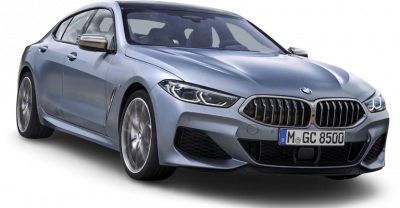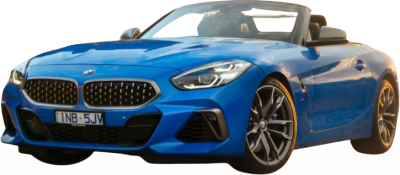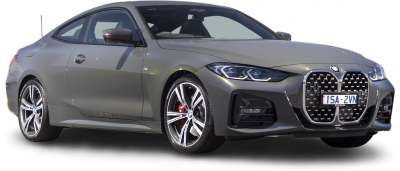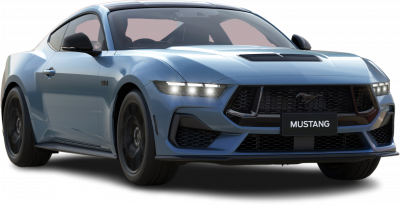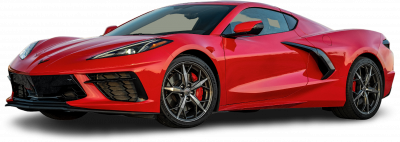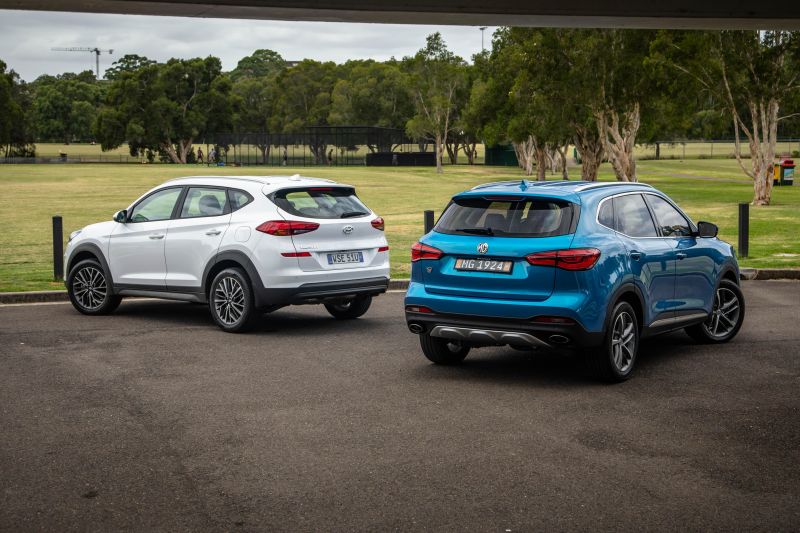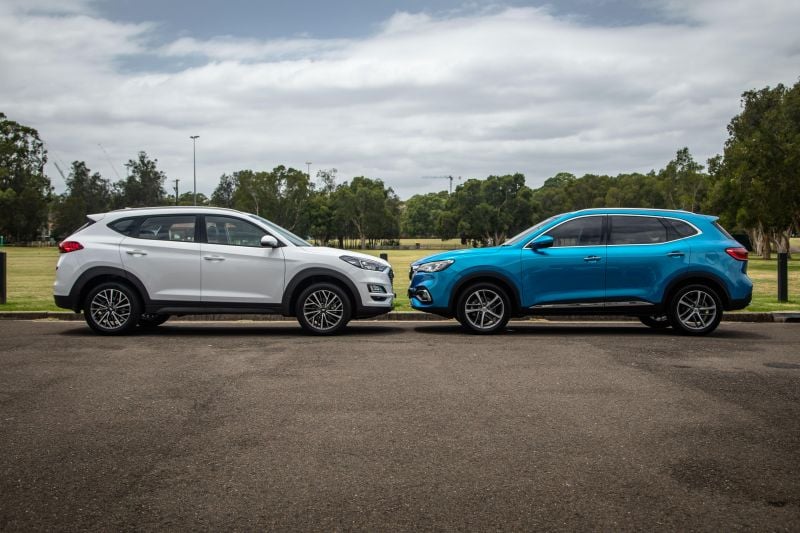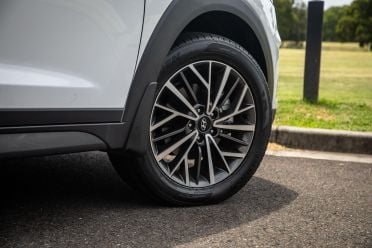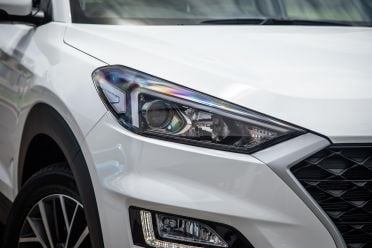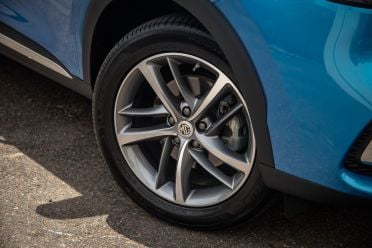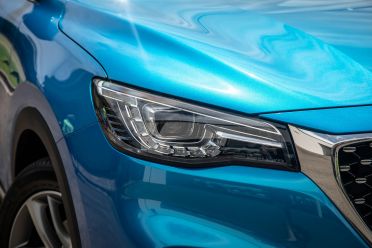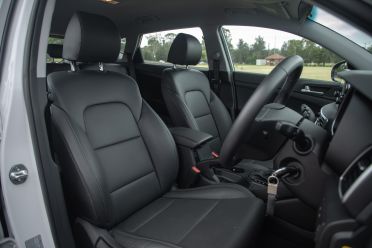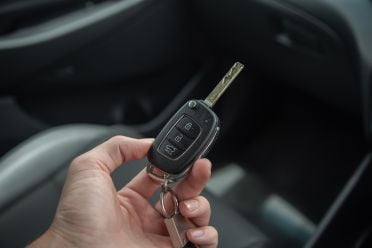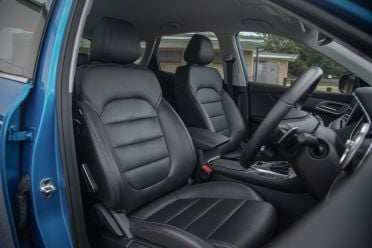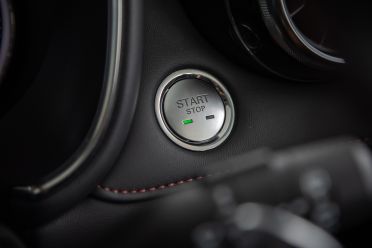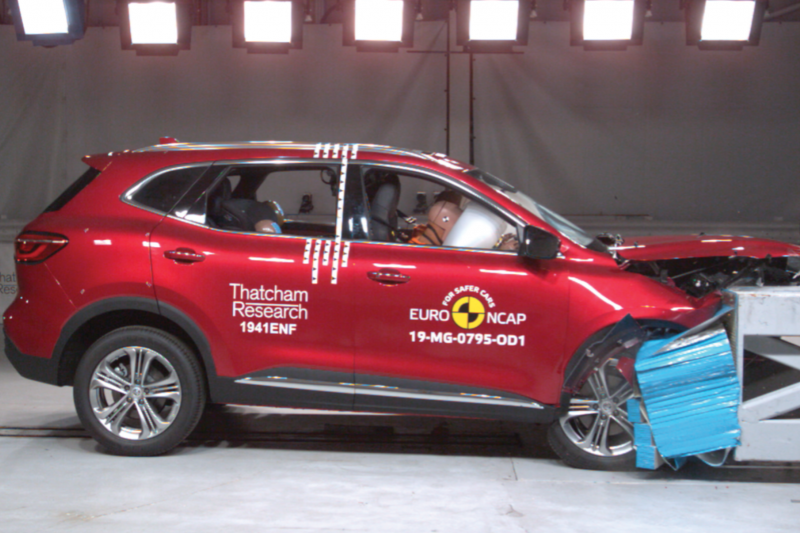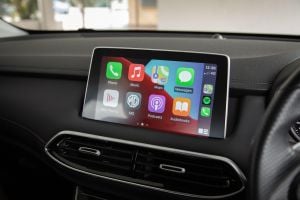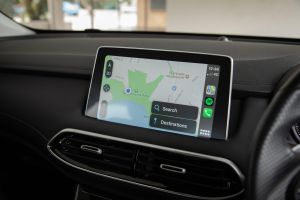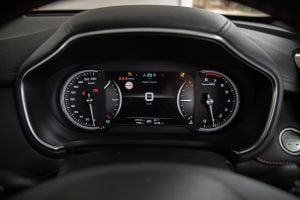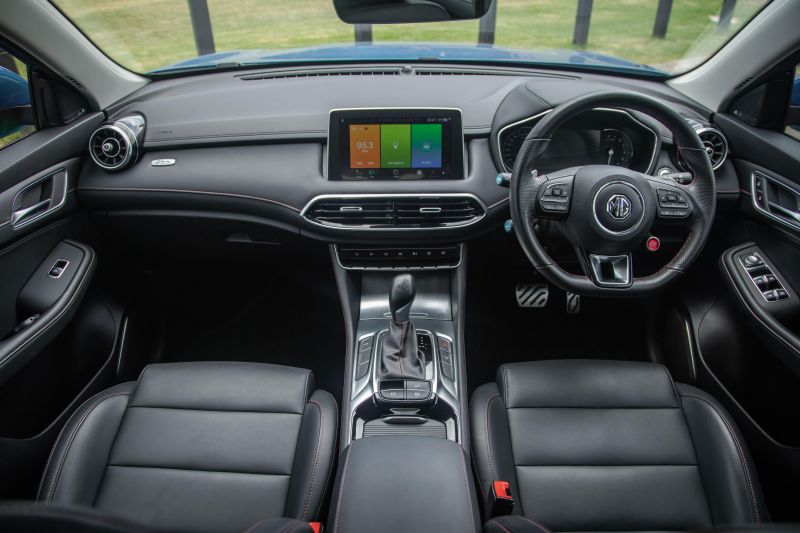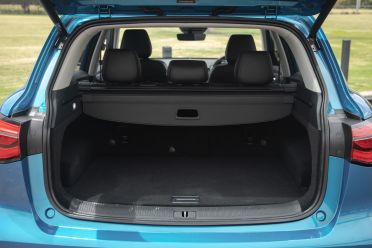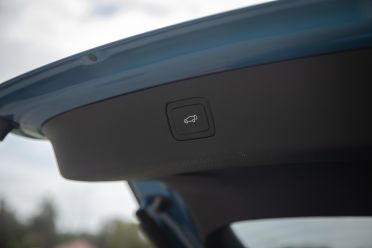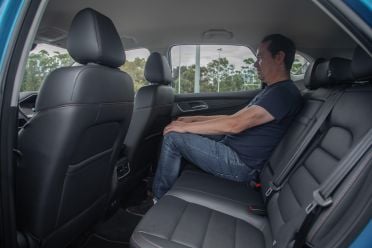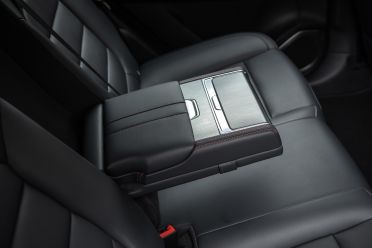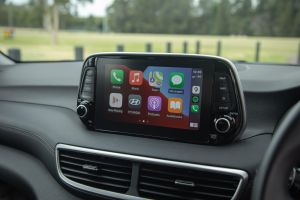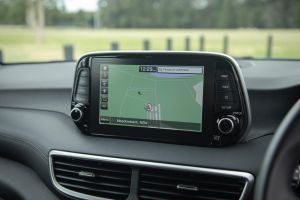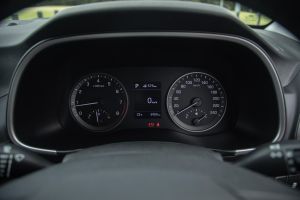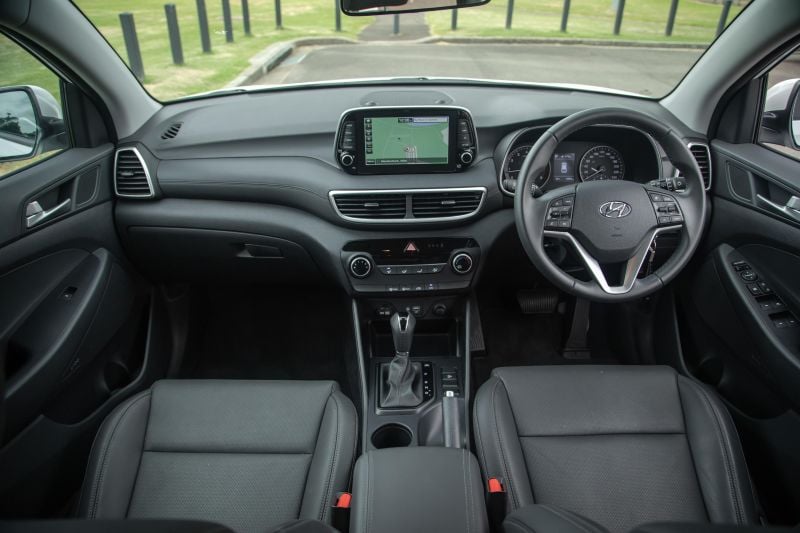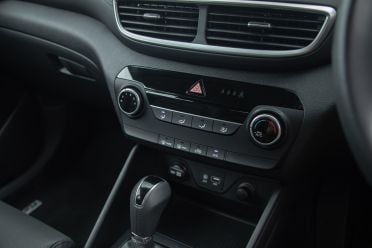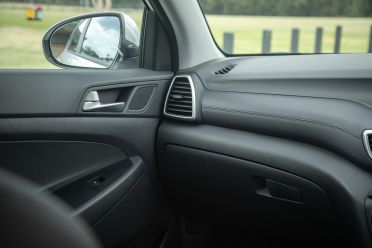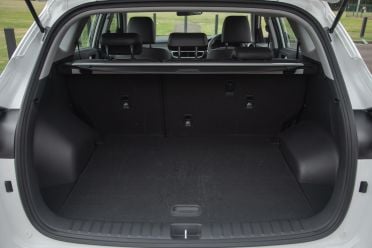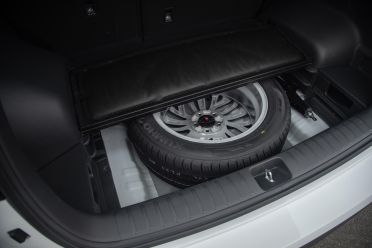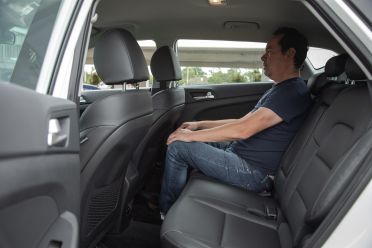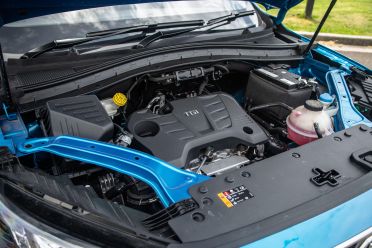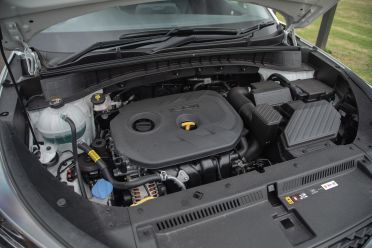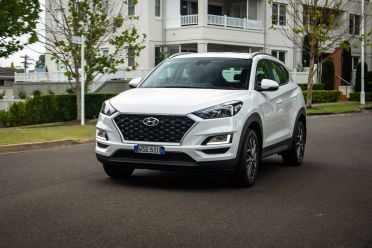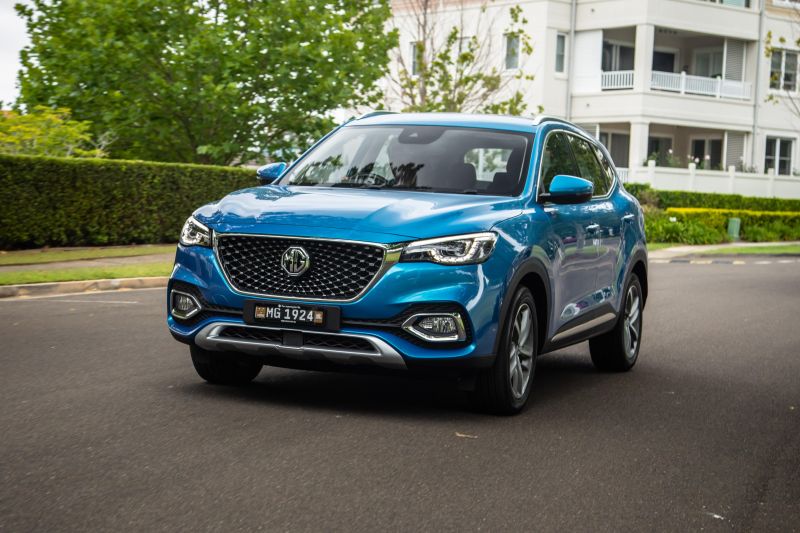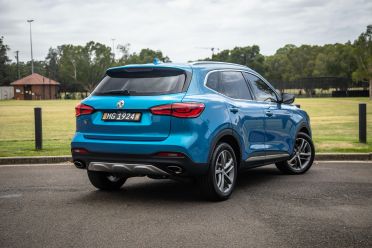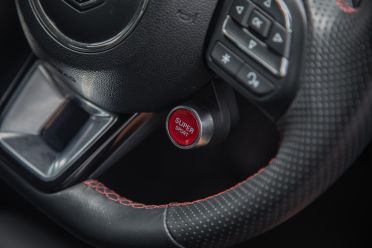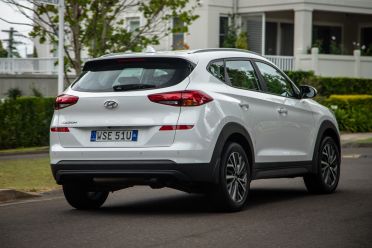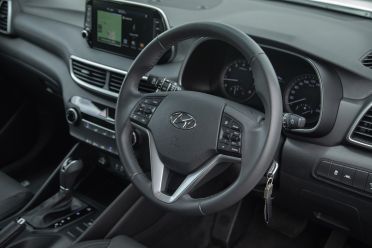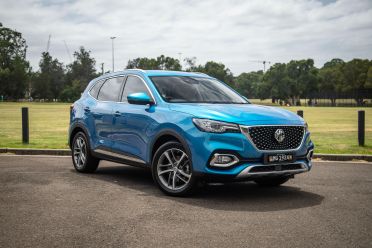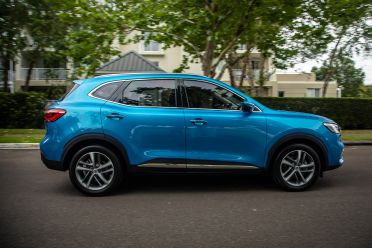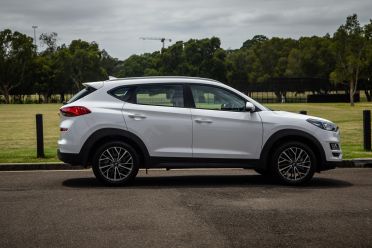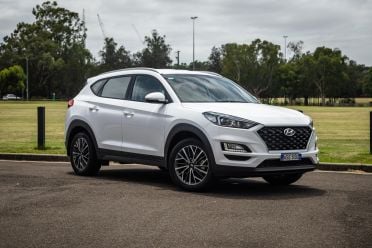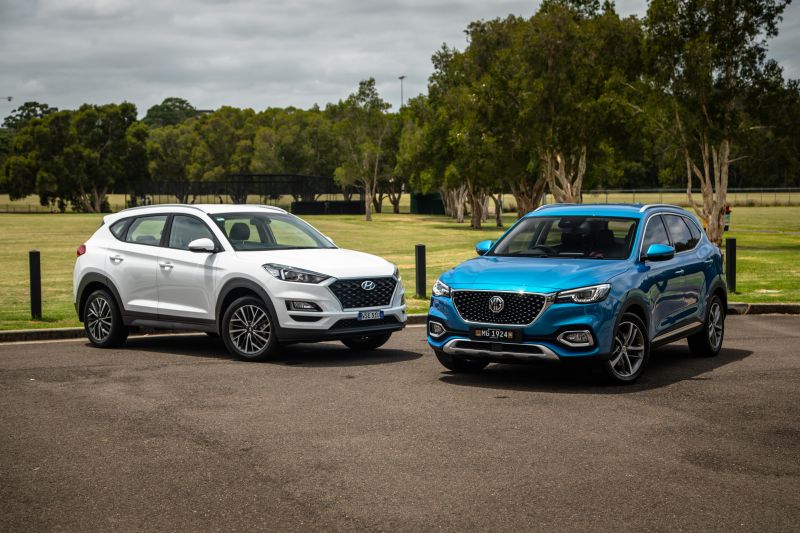With the launch of its all-important HS in 2020 and recent expansion to five range variants, MG is starting to make inroads into acceptance as a major player in the competitive medium SUV segment.
Here on test is the mid-range MG HS Excite, its obvious pitch being a brimming stack of equipment for the money it charges.
As a $35,000 prospect, our MG tester appears well priced if not quite bargain basement. Similar money offers a lot of choice in competition, if rarely as highly specified. It needs to stack up in genuine value but also back it with quality and depth in execution, to earn the sort of hard-fought reputation enjoyed by the Hyundai Tucson – even as the latter nears replacement.
Top-three with Aussie medium SUV buyers and one of Australia’s regular top 10 sellers outright, the Tucson has put runs on the board though a long innings. Our Active X grade test car is now fairly close to retirement before a sharper-looking, techier and larger replacement arrives in a matter of months.
An unfair fight? Well, the current Tucson remains both hugely popular and on sale. But also, it’s fair to reason that existing owners, as well as those after a runout deal, are the sort of customers that a challenger brand like MG is hoping to tempt across.
It’s a good baseline to see how far this company’s product has come in a short time, an ideal barometer to measure if MG stacks up in all-round quality, not merely as a price-leader.
How much?
At $34,990 drive-away, the Excite sits right in the middle of the HS range that kicks off at a thrifty $29,990 on road for the Core grade, and reaches up to the Essence Anfield at $40,690 on road.
With 11 different variants, Hyundai’s Tucson covers more bases across a broader pricing spread, though importantly the choice has much to do with powertrain variety on offer. Essentially, there are four variant tiers with our one-up-from-base Active X auto front-drive test car hitting the kerb at $35,990 drive-away. You can also get a manual version for two grand less.
Yes, there’s only a thousand bucks in it, in favour of the MG. They’re more or less aligned variations when it comes to showroom hierarchy and most certainly direct cross-shopping alternatives to one another.
What do you get?
Both the HS Excite and Tucson Active X have 18-inch alloy wheels, reversing cameras and sensors, and heated power-folding mirrors.
But the MG features LED headlights while the Hyundai makes do with projector units. The MG also exclusively fits a powered tailgate and rain-sensing wipers. Commendably, the Hyundai fits a full-size spare wheel, whereas the MG stows a space-saving temporary one.
Both offer “leather look” (MG) and “leather appointed” (Hyundai) seating with mechanical adjustment, the Hyundai bringing powered lumbar support to the party. But from hereon in the Hyundai starts to look bit basic in grade in a lot of its features compared with the MG.
The MG offers push-button start and an electric park brake that’s more upmarket than the Tucson’s key-in-barrel and mechanical handbrake spec. The Chinese SUV also gets one-touch electric windows all round, whereas it’s auto action for the driver’s window only in the Korean offering. The MG also exclusively offers adaptive cruise control (rather than passive), and a larger colour driver’s trip computer screen against the Tucson’s monochrome TFT.
The MG fits a larger 10.1-inch touchscreen infotainment system though it lacks the analogue controls offered with Hyundai’s 8.0-inch unit. Each offers proprietary sat-nav and Apple and Android smartphone mirroring, though the Tucson exclusively offers DAB+.
LED cabin lighting and paddle-shifters come with the MG alone, and its climate control system is a more upmarket inclusion compared with the Hyundai’s regular air-con.
Are they safe?
MG HS Excite:
ANCAP awarded the MG HS five stars in 2019, with 92 and 83 per cent respectively for adult and child occupant protection, 64 per cent for vulnerable road user protection, and 77 per cent for safety assistance systems.
A suite of safety gear marketed as ‘MG Pilot’ is offered throughout the HS range and includes all-speed autonomous emergency braking (AEB) with cyclist and pedestrian detection, forward-collision alert, lane-departure warning, blind-spot warning and rear cross-traffic alert. The radar- and camera-based tech used in the all-speed AEB also facilitates the all-speed cruise control and traffic jam assist conveniences. Auto headlights and high-beam control, speed-sign recognition, and a door-opening warning for parallel cyclists are also fitted.
That’s a lot of gear at this price point. The MG also fits six airbags as well as ISOFIX and top-tether child-seat anchor points.
Hyundai Tucson Active X:
The Tucson range also scored a full five-star ANCAP rating, from a 2015 assessment using scoring that doesn’t fully correlate with current rating criteria. In that regime, the Hyundai scored 14.53 out of 16 for frontal impact, 16 from 16 for side impact, and garnered ‘good’ and ‘marginal’ appraisal for whiplash and pedestrian protection respectively.
The Hyundai’s AEB system is camera-based only and offers urban-speed coverage. There’s no high-beam assistance, blind-spot monitoring or rear cross traffic alert. You do get driver attention warning, and lane-keeping assistance.
It too fits dual front, side and curtain airbags and offers ISOFIX and top-tether child seat anchor points.
In short, you need to spend more and move up the Tucson range to get the sort of blanket safety coverage the MG HS offers here at this pricing tier with its Excite.
What are they like inside?
MG HS Excite:
Much like its exterior styling, the MG’s cabin is fairly generic in design, conspicuously lifting details from certain European marques. But its look and feel comes together nicely enough in what’s quite an upmarket effect for this price point.
The faux leather effect that extends through the dash fascia and door inserts is actually quite nice, the seat trim more supple than the mixed real and fake stuff in the Hyundai. The colour choice mixed with red stitching and mood lighting conspire to create a welcoming ambience.
If there’s obvious cost consciousness at play, it’s that so much of the cabin feels plasticky, and some of it appears fairly cheap-looking at that.
There’s nothing overly economical about the switchgear, controls and materials, and the displays are colourful and sharp in resolution.
The half-analogue, half-digital driver’s display is novel if a bit distracting in content – particularly the pulsating speed rings – and misses some key features such as radio control, but general execution is pretty decent. Ditto the curious ‘Trophy’ dash badge, whatever that happens to refer to…
The infotainment looks great, works well and bar the curious omission of digital radio functionality and some fairly average sound quality, it does the job.
Rear room is excellent, with oodles of legroom and virtually no foot-room-robbing tunnel. There are huge door bins, very neat cup-holders and a storage facility in the armrest and, unlike the Hyundai, proper air vents in the back end of the console. The seats themselves are comfortable with a fair amount of rake adjustment. It’s downright decent accommodation for two rear-row adults, or three across at a pinch.
The boot has a high floor with a fair amount of underfloor storage atop the spare wheel housing. It offers good width, modest depth and not a whole of height to the removable parcel shelf, offering 463 litres under the cover with the rear seats in play and 1287 litres to the window line with the 60:40 split-fold seat-backs stowed. The powered tailgate is a bonus, though the tailgate lip hangs quite low at full extension.
All in all, a well-presented cabin with keen sense of celebration and lots of practical space and acceptable luggage capacity.
Hyundai Tucson Active X:
The stalwart of this twin test offers neat and logical cabin design that has weathered its advancing age nicely, but its sense of solidity is countered by a general blandness in styling in comparison to the MG. It’s well made and nicely integrated, though the sheer lack of colour in its almost monochromatically grey scheme lacks interest and feels a bit rudimentary.
The controls, switches and material choice are all decent but it’s the general mix of hardy plastics and not-so-soft surfaces that’s quite utilitarian rather than luxurious. The key barrel, manual handbrake and an array of blank buttons on the centre console – as a reminder you’re missing some features somewhere – reinforce the basic vibe.
Trim work is decent if lacking the MG’s plushness, though seating comfort and support, and the general ergonomics, are better executed. There’s a more logical placement of controls in the Hyundai, particularly in the button and dial array surrounding the infotainment system, which offers helpful content. But it’s starting to look and feel its age. DAB+ inclusion and the general fine sound offered by the Infinity-branded auto are two notable pluses here.
The fairly ‘basic’ theme extends to facilities, with half of the USB port count of the MG, including a single outlet as seemingly the second row’s only real feature of note bar cup holders in the armrest. Yes, the lack of rear air vents in any family hauler is a fairly notable omission.
Rear room is quite decent, the sculpted front seat-backs carving out a bit of extra knee room, while the Hyundai also features seat-back rake adjustment to tune in a bit more comfort. Contour wise, the Korean’s rear seating has the slight edge over the Chinese rival.
The Tucson’s boot appears a little larger if with quite similar proportions to the MG. There’s a touch more width if little extra storage per se. Under the floor it fits a larger full-sized spare wheel, which is a big plus. Luggage space converts from 488 litres with the 40:60 split seating in play to 1478 litres with seating folded.
It features a similar soft parcel shelf with hard mount as its rival that, typical of its design, is easily removed with a bit of fiddling, and the 12-volt outlet in the luggage area wall is a thoughtful inclusion.
| MG HS | Hyundai Tucson | |
|---|---|---|
| Length | 4574mm | 4480mm |
| Width | 1876mm | 1850mm |
| Height | 1685mm | 1660mm |
| Wheelbase | 2720mm | 2670mm |
| Boot | 463L | 488L |
What’s under the bonnet?
MG HS Excite:
A one-spec-fits-all 1.5-litre turbocharged inline four powers the HS range. It offers 119kW of power (at 5600rpm) and 250Nm of torque between 1700 and 4400rpm. It’s paired with a seven-speed dual-clutch transmission only – as mentioned above, there’s no manual option – driving the front wheels only.
It’s advertised combined fuel consumption is 7.3 litres per 100 kilometres though, on test, it returned figures around a litre thirstier for mixed driving outside of peak-hour times. The engine brings with it an expected minimum fuel grade of 95 RON fuel, and the tank stores 55L.
Suspension comprises front strut and rear multilink designs.
Hyundai Tucson Active X:
The Tucson has a larger-displacement 2.0-litre naturally aspired four-cylinder producing a slightly superior 122kW (at 6200rpm) but a more modest 205Nm at 4000rpm. Our tester fitted the conventional six-speed torque-converter automatic in a matching front-wheel drive configuration.
A punchy 136kW/400Nm diesel option is available for a cost. You need to step up the Elite grade version to get a 1.6 turbo-petrol four that brings with it a superior 130kW/265Nm paired with a dual-clutch gearbox.
The Active X’s 2.0-litre only requires cheaper 91 RON fuel though its combined consumption claim is a thirstier 7.9L/100km. While natural aspiration tends to return less fluctuation in consumption depending driving style and situation, our tester returned a similar one-litre excess in advertised thirst as the MG demonstrated, or around the 9.0L/100km mark. It fits a larger 62-litre tank.
Like the MG, the Tucson range fits strut front and multilink suspension exclusively.
Towing? The Hyundai Tucson Active X is rated at 1600kg while the MG HS Excite is rated for a comparatively paltry 750kg.
| MG HS | Hyundai Tucson | |
|---|---|---|
| Fuel | 95 RON | 91 RON |
| Displacement | 1.5 litre | 2.0 litre |
| Induction | Turbocharged | Naturally aspirated |
| Power | 119kW | 122kW |
| Torque | 250Nm | 205Nm |
| Driven wheels | Front | Front |
| Transmission | 7DCT | 6AT |
| Ground clearance | 175mm | 172mm |
| Tow rating | 750kg | 1600kg |
| Fuel economy | 7.3L/100km | 7.9L/100km |
How do they drive?
MG HS Excite:
For sheer energy, the 1.5-litre turbo-four packs ample punch and there’s little sweat involved getting a hasty move on. But the throttle calibration lacks genuine linearity and progress can become a bit frustrated by inconsistency from the dual-clutch transmission.
Sometimes the powertrain responds as expected, others it gets caught snoozing with a concerning delay of response and, on the move, it hunts along in a manner that suggests the gearbox calibration wants for a bit of final polish.
Fishing around the Eco, Normal and Super Sport driving modes – activated via a conspicuous wheel-mounted red button – presents shades of different character but none of these really presents a nice, polite driving mode as an all-round default.
It is reasonably quiet on the move. The steering is surprisingly hefty for a non-sporty device though it points well and is easy to punt around and place on the road or plug into cosy car spaces. It feels petite enough to offer easy parking, aided in no small part by the clear-resolution reversing camera.
The ride quality is certifiably soft which will please a good many owners, though it is a touch floaty and lacks damping discipline, with a slight wallow when settling after a hump or dip. It does cushion bumps reasonably well, but our test car’s front axle does make a helluva ‘clunk’ when negotiating a speed hump with a bit of enthusiasm.
Also, it does seem to have quite a wide turning circle for a mid-sized SUV. Thanks to a fairly low dash top and quite high-set driving position, outward visibility is exceptional in every direction except the forward-left view, which is almost completely obscured by the unnecessarily low-hanging rearview mirror.
Hyundai Tucson Active X:
In direct comparison with the MG, the Tucson’s 2.0-litre engine feels, at once, cleaner and more linear in its responses, if patently lacking its turbocharged rival’s mid-range shove. Plumb the best of its torque and the naturally aspirated unit can sound coarse and seem a bit strained.
The auto is reasonably polite and fairly unremarkable though its shifts are more intuitive than the MG’s dual-clutch. The Hyundai’s progress in mixed general driving is more resolved and less flustered, cleaner off the mark and smoother up and down the ratios.
Like its MG HS rival, the Tucson Active X has steering erring slightly on the heavy side, though not to the point of any real annoyance. Its made-for-Australia suspension tune isn’t quite as cushy as the MG’s, and does get a bit sharp over speed bumps, but it’s certainly more disciplined and strikes a neater balance between ride comfort and offering a modicum of handling spark.
Despite the pair’s similar sizes, the Hyundai does feel a touch larger on the road and it’s a little tougher to park, if mostly in the sense of its body width. But ostensibly it’s not any trickier to judge than most choices in its segment. In fact, the sense of a bit more metal surrounding the accommodation is a bit of a plus for some buyers and owners.
All in all, the Tucson makes for a more resolved and evenly tempered on-road experience, if one lacking the punchy spark offered by the feistier if somewhat grumpier MG.
Cost of ownership
The MG steals the march with seven years of unlimited kilometre warranty compared with the still decent five- years offered by Hyundai, with no kilometre cap.
Both SUVs require servicing every 12 months though intervals are capped at a recommended 10,000kms for the MG, while the Hyundai benefits from lengthier 15,000km intervals between servicing visits.
Hyundai’s pre-paid standard servicing plans are between $840 for three years (45,000km) and $1530 for five years (75,000km). The MG works out more expensive as the first three visits cost a total of $991.71 (30,000km) while five years (50,000km) calculates to $1708.29.
While the MG might be around 10 per cent thriftier on fuel consumption, its reliance on pricier 95 RON may balance out the fiscal outlay in the longer run if against the cheaper fuel that’s compatible in its Hyundai rival.
CarExpert’s Pick
For two direct competitors these are two distinctively different enough propositions.
The MG lays on equipment, safety gear and has a more upmarket vibe in presentation, but could do with a more evolved on-road experience. In direct contrast the Hyundai offers a more polished drive but its features list seems much more budget-oriented.
Both are solid SUVs and realistically leaning one way or the other comes down to buyer priorities and preferences. That said, we’ve given the win here to the much newer MG by a nose. As a budget SUV it has more of the equipment you want plus more of the safety kit you need. Lots of one or the other mightn’t have sealed the deal, but both…
Indeed, the HS is testament to MG’s continued upward trajectory that leaves make-do motoring behind it. The Excite variant, specifically, should cause rivals pause for consideration at the very least.
That said, the HS does lack the well-rounded resolve of the Tucson and has some ground left to make up in the on-road experience. And the challenge will surely get far tougher once the new-generation Tucson lobs later in the year.




